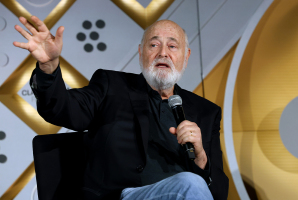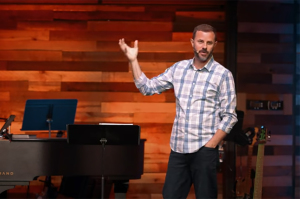The End of the Christian Right?
With the Christian Right's failure to rally behind a presidential candidate early in the campaign and the infighting on display after a supermajority of its leaders decided last Saturday to back Rick Santorum, many have argued that the country is witnessing the end of the Christian Right.
Michael Kazin, professor of history at Georgetown University, in an article for The New Republic, claims, “The Christian Right is fighting a losing battle” on the issues of abortion and same-sex marriage. Kazin supports his assertion that the Christian Right has declined in influence with two points: “the absence of effective, well known leaders” and a lack of enthusiasm for the movement among the younger generation.
But one expert doesn’t see the movement ending. Rather, it is changing, said Kimberly Conger, who teaches political science at Colorado State University and is the author of The Christian Right and Republican State Politics.
“It's not going to be the same movement as the previous generation incarnated,” Conger said. “The Christian Right is not gone (how many times has that been predicted?), but like any social movement, it is evolving.”
Pundits have been predicting the demise of the Christian Right almost as soon as it started. In 1988 there was a book called The Rise and Fall of the New Christian Right. A year later, another titled Fall From Grace: The Failed Crusade of the Christian Right was released.
More recently, in 2007, former George W. Bush administration insider David Kuo wrote a book suggesting that the 2006 election results were a sign that the movement would soon be over. And, in 2009, Washington Post columnist Kathleen Parker asked, “Is a New Generation of Christians Finished with Politics?”
David French, co-founder of “Evangelicals for Mitt,” provided a similar diagnosis on Wednesday.
In an editorial for The Washington Post, French asserts that Christian Right leaders “have little name recognition, represent small (and overlapping) constituencies, and simply cannot by themselves motivate large numbers of voters.”
Well-known leaders such as Jerry Falwell, James Dobson and Pat Robertson helped get the “Christian Right” movement going in the 1980s, with their large following. But many are hard pressed to name Christian leaders with the same influence and national following in this generation.
While some think the Christian Right is on its last legs, Conger pointed out to The Christian Post that movement leaders have consciously moved most of its efforts to the state level.
“It is true that there are not a lot of nationally recognized names, but there are a slew of state level Christian Right leaders who are having practical impact on morality issues,” she noted. “Most of these issues, including abortion and same-sex marriage, are inherently state level issues.”
On the issue of leadership succession, there are some generational differences between the older and younger generations of Christian conservatives. The concerns of the younger generation, for instance, tend to be broader.
“The younger generation of evangelicals is different, in general, and so the leadership that is emerging does not look like the older Christian Right. In fact most of them want nothing to do with the baggage of the Christian Right of the 1990s and George W. Bush administration,” Conger said. But, “there are clearly still significant groups of conservative younger evangelicals who have the motivation and skills to run the movement.”
Commentaries on the “end” of the Christian Right came out days after a group of 150 evangelical and Christian conservative leaders, including Dobson, met in Texas to try and come to a consensus on a candidate for president. A supermajority chose to back Santorum. Newt Gingrich came in second.



























